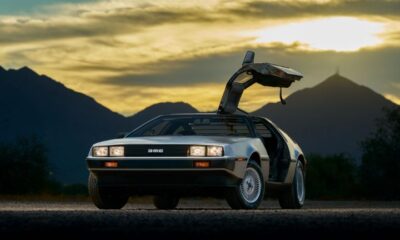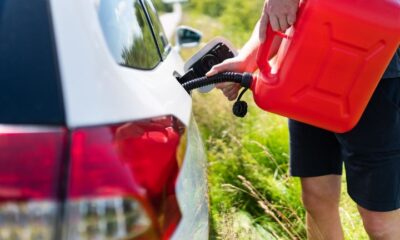CARS
6 Popular Car Features That Will Never Be Seen Again
Published
1 year agoon

Shutterstock
Venturing into the market for a new car after some time can be overwhelming, given the rapid advancements in vehicle technology. Features like rear-view cameras, auditory safety sensors, and expansive screens for navigation and entertainment, once limited to futuristic concept cars, are now mainstream. Darren Palmer, Ford’s Global Product Development Director for Battery Electric Vehicles, explains, “Car design is constantly adapting to consumer needs. Your smartphone now serves as a key, music hub, GPS, and a link to emergency services, allowing technology to reshape our driving experience and giving manufacturers like Ford new creative freedom.” As we embrace these innovations, several once-popular car features are fading into obsolescence, making way for the new. Discover which features are on their way out, and also learn about common car practices that mechanics advise against.
Pop-Up Headlights

Shutterstock
The emergence and eventual decline of pop-up headlamps in automobiles can be attributed to a combination of government regulations and automotive design trends. For several years, U.S. regulations specified strict size and shape requirements for car headlamps. This prompted designers and engineers to innovate, particularly as they aimed to create sleeker, more aerodynamic front ends. The solution was to conceal the headlamps, allowing them to “pop up” only when needed at night.
Gas Filler Cap

Shutterstock
In the future, the familiar routine of unscrewing a gas cap at the fuel station might become a thing of the past. Ford has been a pioneer in this area, having introduced the capless Easy Fuel feature back in 2011. This innovation not only thwarts fuel theft but also eliminates the inconvenience of handling a gas cap, especially during cold winter months when it’s a struggle with freezing hands. Additionally, the absence of a gas cap means there’s one less item for car owners to misplace.
Hood Ornaments

Shutterstock
Once a symbol of luxury, stand-up chrome hood ornaments are now a rarity, mainly found on select high-end vehicles. Modern safety regulations have necessitated changes, as these protruding emblems can increase the risk of injury to pedestrians and cyclists in the event of an accident. To address this, some contemporary cars equipped with hood ornaments feature an automatic retraction system that withdraws the ornament into the hood upon impact.
Spare Tire

Shutterstock
Flat tires, once a frequent inconvenience for drivers, have become less common, thanks in part to advancements in tire technology. Many modern vehicles are now equipped with run-flat tires, designed to be driven for several miles even when deflated. This innovation, combined with the automotive industry’s ongoing pursuit of improved fuel efficiency, has led to a notable change. To reduce weight – a crucial factor in enhancing efficiency – many car manufacturers are replacing traditional spare tires with a combination of tire sealant and a compact air compressor. This shift not only contributes to fuel economy but also reflects changing needs and technologies in modern car design.
Power Antenna

Shutterstock
Power antennas, once a common feature in cars, were notorious for their lack of reliability, particularly in colder climates where they were prone to freezing and breaking due to ice and snow. Initially, these extendable antennas were essential for enhancing radio reception, especially for pulling in signals from distant stations. However, the advent of digital broadcasting and satellite radio has rendered the tall, telescopic antennas obsolete.
Parking Brake Handle

Shutterstock
The traditional hand-operated parking brake, often called an emergency brake due to its ability to function even if the regular brakes fail, is becoming a rarity in newer car models. This shift is towards an electronic parking brake system, activated simply by a push of a button. This modern approach is not only more convenient but also offers several advantages for automotive designers. The incorporation of a button-based system is easier to integrate into the vehicle’s design, freeing up interior space for additional features like extra cupholders. This transition reflects the ongoing evolution in automotive technology, prioritizing ease of use and efficient space utilization.
More From Auto Overload
-


8 Easy Ways To Increase Your Car’s Value
-


10 Weirdest Cars To Ever Hit The Road
-


10 Greatest Trucks Ever Built
-


11 Essential Items You Need To Keep In Your Vehicle
-


6 Strategies To Save At The Pump
-


8 Easy Ways To Boost Fuel Efficiency
-


8 Tactics To Deter Car Thieves
-


9 Things You Should Never Leave In The Car
-


7 Vehicles That Should Have Never Been Discontinued
-


Two Essential Truths Every Car Owner Needs To Know
-


6 Best High Mileage Motor Oils On The Market
-


12 Most Astonishing Concept Cars Ever Created

